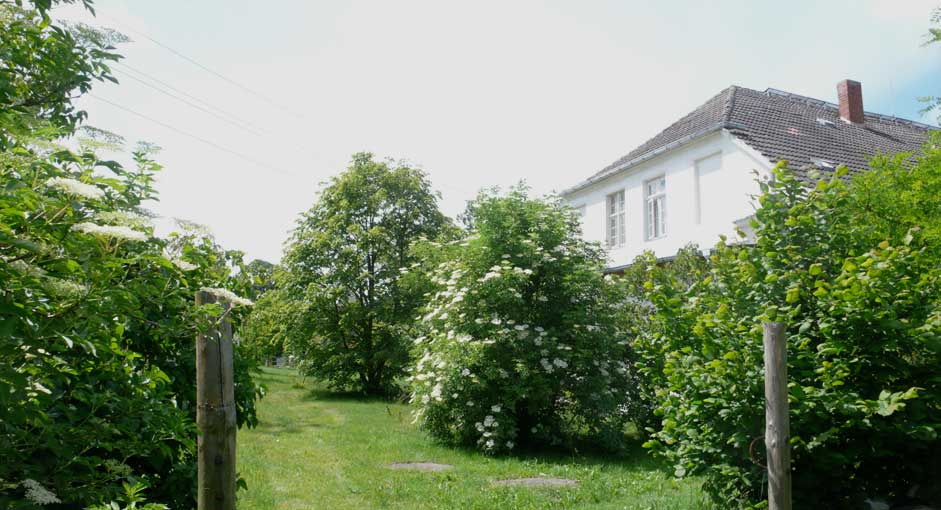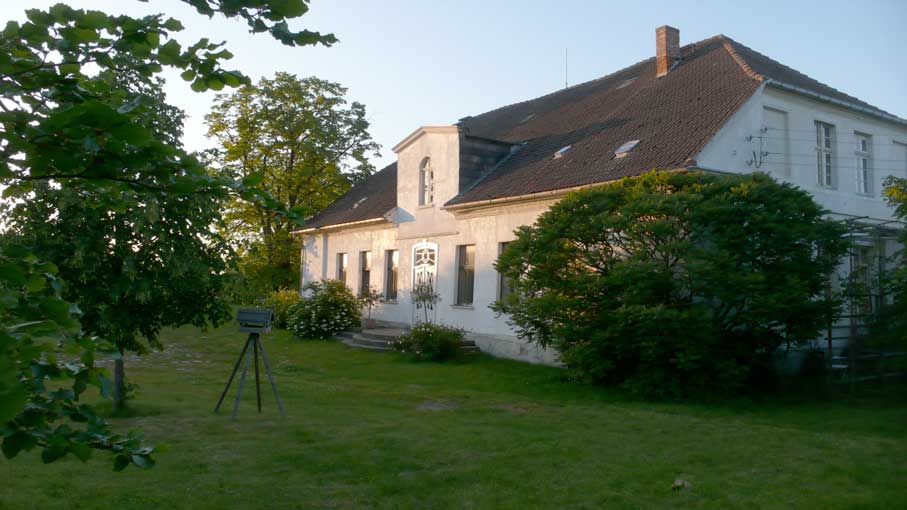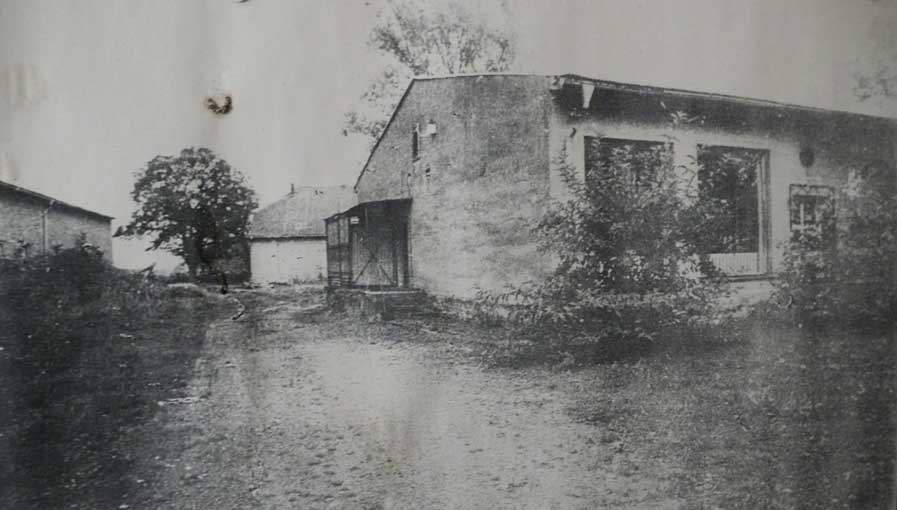
Das Romantische und das Nationale im Klischee
Wie wichtig sind Klischees für das Selbstverständnis einer Nation?
29. September 2009
Hans-Jürgen Syberberg – Filmregisseur und Künstler
Im Sommer, als ich hier in Berlin an einem Gespräch auf der Bühne der Theaterfestspiele teilnahm, traf ich nachher Herrn Kittelmann und er fragte mich, ob ich an einer Reihe von Vorträgen zum Thema "National-Galerie" in der Nationalgalerie mitmachen wolle. Angesichts des Ortes und seiner Neupräsentation der Nationalgalerie, zu der er mich einlud und er bei meiner Warnung, daß ich dann so darüber sprechen wollte wie soeben, lebhaft zustimmte, sagte ich dann nach einigem Zögern zu, denn ich will sprechen über den Ort, wo ich mich momentan aufhalte und das nicht ohne einen gewissen Grund und Hintersinn. Das Wort National-Galerie fand ich insofern interessant in diesem Zusammenhang, weil der Ort meiner Geburt in Pommern, Nossendorf in Vorpommern, allerhand in sich birgt, was meines Erachtens geeignet ist, in diesem Zusammenhang besondere Beachtung zu finden, nämlich im Zusammenhang von National und Galerie, also Galerie im Sinne des Anspruchs eines Artefakts. Es ist so, daß ich an diesen Ort zurück kam vor 20 Jahren im Herbst, nachdem die Mauer gefallen war und ich das Haus wieder sah, das Gutshaus, in dem ich aufgewachsen war und wo ich mit zwölf Jahren dann weg ging. Ich sage bewußt nicht, gehen mußte, wo wir weggingen, mit meinen Eltern, und daß dieses Haus in einem Zustand war, das im Vergleich zu dem, was ich als Bild meiner Kindheit in mir trug, überhaupt nicht zu beschreiben ist. Alptraum ist gar kein Ausdruck. Man hat sich das nicht vorstellen können, denn natürlich wurde 1945 manches überlegt, was wohl werden würde und es wurde auch sicher Schlimmes überlegt, der Tod des Vaters als Gutsbesitzer, vielleicht noch Kampfhandlungen, an denen wir gut vorbei gekommen waren, aber auch gerade so durch Zufall; das heißt, wir dachten an eventuell ruinöse Verhältnisse. Kein Vergleich zu dem was ich da antraf. Ich erkannte das Haus eigentlich nicht wieder. Es gibt auch andere Berichte von Leuten, die Bilder kannten aus meinen Büchern, von diesem Haus vor 1945, und die es gesucht haben, als sie dort hinkamen, aber es nicht fanden, nach der Wende. Ich habe es nur gefunden, weil ich schon Bilder bekommen hatte von einem Freund, der aus dem Westen manchmal hingefahren war heimlich und also ungefähr wußte, wie das aussieht. Jedenfalls in dem Zusammenhang wie es nun erschien, grau, mit DDR-Putz, ohne die begleitenden Ställe links und rechts, der Kühe und Pferde und Schweine und was so dazu gehört zu einem Hof, mit einem quer davor liegenden Konsum, mit einer Leere rundum abgeschlagener Bäume, Waste-Land, (wenn ein Dichter versucht, sich so etwas vorzustellen). Ich tat zunächst einmal weiter nichts, außer daß ich zu dem damals nach der Mauer gerade neu installierten Bürgermeister ging und bat, mich zu benachrichtigen, falls irgend etwas sich bewegen sollte. Aber das Haus war ja bewohnt, acht Parteien wohnten darin, in kläglichem Zustand, so, daß sie mir nach meinem Gang durch das Haus sagten, da müsse ein Bagger her. Das tat sehr weh. Als ich dann wiederkam, zehn Jahre später, da war das Haus zugemauert, die Leute waren draussen, die restlichen Ställe waren inzwischen auch weg , so wie alle übrig gebliebenen Bäume, die noch hinter dem Haus oder im Garten gestanden waren. Das Haus stand buchstäblich vor dem Abriß, eingereicht schon von den damaligen Besitzern. Das war 2000. Ich mußte mich entscheiden, Ja oder Nein. Das war sehr
Seite 2
schwer, denn ich wußte, was jetzt passieren würde, wenn ich mich dazu entschließen würde, zu kommen. Also ging ich hin und kämpfte um den Wiedererwerb des Hauses mit Hof und Park und Koppeln –immer ohne die Felder-, das dauerte etwa drei Jahre. So habe ich von vielen Besitzern, die inzwischen Teile, sowohl des Grundes als auch des Hauses hatten, das Haus und sein Umfeld im damaligen Zustand wieder erworben. Und die Treuhand immer dabei. Das Haus wurde auf Null gesetzt, aber der Grund doch immerhin bezahlt, wieder, wie immer das alles auch aussah. Und dann ging's los, das war 2003. 2003 erhielt ich eine Einladung aus Paris, eine Retrospektive meiner Filme zu machen. Ich sagte nur zu, weil ich die Idee hatte, diesen Ort, Nossendorf heißt er ja, zu verbinden mit diesen Filmen in Paris, im Centre Pompidou. Das war dann auch mein Vorschlag für eine Installation in mehreren Räumen, der auch so realisiert wurde, daß wir im Centre Pompidou mehrere Räume mit den Filmen meines Lebens zeigten, gleichzeitig immer zu verschiedenen Themen, aber das will ich nicht weiter ausführen. Aber dann eben verbunden mit Live- Bildern aus Nossendorf, so wie es damals war, mit vier Kameras. Und umgekehrt mit zwei Live-Kameras Bilder von Paris aus dem Centre Pompidou nach Nossendorf, gesendet in diesen gottverlassenen Ort. Das war 2003 für mich ein Auftakt, in dem noch immer zugemauerten Haus wieder aufzutreten, als Einladung sowohl an die Bewohner dort in Pommern, als auch an die Besucher in Paris, an diesem Ort teilzunehmen, wechselseitig, im Rahmen meines bisherigen Lebens, das dem Film diente. Als das zu Ende war, begann nun die praktische Wiederinstandsetzung. Ich hatte ursprünglich nicht vor, dieses Haus wieder zu bewohnen, sondern ich wollte es eigentlich der Öffentlichkeit in irgendeiner Weise zuführen, zugemauert als Monument der Zeit, denn Geld war ja nicht da, ich hatte nur das Geld aus den Arbeiten an meinen Filmen und im Theater, ohne Gewinn, also nichts Ererbtes und sonst keine Zuwendungen. So überlegte ich mir, wie ich das mit minimalen Mitteln machen kann, so wie ich meine Filme auch immer gemacht hatte, die nicht auf dem öffentlichen Markt bekannt sind und deshalb auch nicht viel abgeworfen hatten. Auch sie hatten nicht sehr viel mehr zur Verfügung zur Herstellung als Subventionsmittel. So, auf bescheidenem Wege machten wir das innerhalb des Dorfes mit einigen Leuten, die dort mauern gelernt hatten oder etwas wußten von Türen und Fenstern oder Eisen und Holz und Elektrizität. Dazu war nötig, daß ich erst einmal die Menschen, die auf dem Hof in Garagen wohnten, gewann. Das das waren die Leute, die gegen mich waren, denn mein Wiederkommen bedeutete für sie den Verlust dieser Garagen und damit ihres Ortes. Und es war klar, auf Dauer konnten sie da dann nicht bleiben. Das bedeutete auch die Entfernung des Konsum als Zentrum des LPG-Dorfes mitten im Hof. Nun gut, der Konsum war inzwischen längst geschlossen, aber ihn abzureißen hätte allein 28.000 DM gekostet, und die hatte ich nicht, also mußten wir das intern lösen und zwar mit Hilfe dieser Garagenbewohner, die wir in unserer Sprache "Assis", Asoziale nennen würden, und sie benahmen sich auch so, wie man sich das vorstellt. Ich hatte früher einmal einen Film gemacht über Rocker in München und so in der Art waren diese Garagenbewohner nun auch dort. So machte ich sie mir zu Freunden, kann ich sagen, wie der Regisseur eines neuen Films in eigener und realer Sache nun, und so haben wir gemeinsam dann den Grundriss des Hauses erst einmal wiederhergestellt, innen, denn der war total verändert. Es waren neue Wände da, für die neuen Verhältnisse der einzelnen acht Parteien, die darin lebten und es waren frühere Wände bzw. Türen entfernt und Fenster zugemauert wie die Türen. Also wir hatten ganz im Groben allerhand zu tun, um das Haus wieder herzustellen. Ich wußte noch nicht, wie und warum, aber sie wollten auch etwas tun, einerseits waren sie nun von mir motiviert und andererseits bekamen sie auch Geld dadurch, sie waren arbeitslos. Aber Geld in einem Maße, wie ich das mir erlauben konnte, von Raum zu Raum, Fenster herausschlagen, Türen, die alten wiederherstellen, die falschen
Seite 3
Öffnungen zumachen, die falschen Wände herausnehmen, die alten wieder einzurichten, nach Zeichnungen meines Vaters bzw. meinen Erinnerungen. Nun, meine Erinnerungen waren die von einem Gutshaus und einem Hof, wie es das heute nicht mehr gibt, auch im Westen nicht, mit Schweinen, Pferden, Kühen, Hühnern, Gänsen, Korn und Rüben und den Menschen, die das mit ersten Treckern und Dreschmaschinen bewirtschafteten. Diese Welt war 1945 zu Ende, auch im Westen. Wir wissen ja, die Landwirtschaft ist heute eine andere. Die DDR hat auf ihre Weise darauf reagiert, wir wissen, daß die Siedler das übernahmen, dann die LPGs, also die große Zusammenfassung in Großbetriebe und von der Unwirtschaftlichkeit der alten Wirtschaftsräume, also mussten die alten strohbedeckten Scheunen weg und die Ställe aus handgemachten Backsteinen mußten weg oder verfielen. Das Gutshaus wurde nicht von irgendwelchen neuen Machthabern besetzt, sondern es wurde als Notquartier durch andere Nutzungen vernichtet, das war auch ein Staatsziel. Aber die Erinnerung an den früheren Zustand, wie ich sie auch darstellte in einem wichtigen Kapitel am Ende meines Films mit dem Titel "Die Nacht", 1984 gedreht als Monolog, sechs Stunden lang mit Edith Clever, diese Erinnerung wiederherzustellen war nun nicht möglich. Übrigens machte ich später noch einen 2. Film über den Ort Nossendorf, in dem die Erinnerung aus der "Nacht" ergänzt wurde und den ich "Ein Traum, was sonst ?" nannte nach Kleists "Prinz von Homburg ". und da muß ich noch mal zurückgehen, aber das hat seinen Sinn, warum ich das mache, Dieser Film wurde gedreht nach dem Fall der Mauer..., nein anders, es war zuerst ein Theaterstück 1990 und wurde dann als Film gedreht 1994 , also war das nicht mehr meine Erinnerung, denn ich war inzwischen in Nossendorf gewesen und hatte gesehen, wie es dort aussieht und was verloren war, sondern wurde so zum Abgesang eines Verlusts. Ich hatte das Gefühl, es ist alles verloren. Mit der Prämisse dieser vergangenen Erinnerungen, manifest geworden in einem Film und auch am Theater übrigens in Paris und eines Films, der dem Verlust gewidmet war, mit dieser Prämisse mußte ich also neu antreten. Das hieß, nicht wiederherstellen über das Bewohnbare hinaus. Alle Erwägungen, eventuell einen neuen Film zu machen und mit diesem neuen Film eventuell durch eine historisierende Wiedererrichtung der Gebäude mir eine volle Wiederherstellung des Hofs zu finanzieren, alle diese Erwägungen, etwa im Sinne vielleicht von Bergmanns Jugenderinnerungen als Film, wie "Fanny und Alexander", wurden von mir verworfen, nach langen Überlegungen. Es hätte auch eine Familiengeschichte besonderer Art werden können. Anlässe gibt es in der Familie genug, um so etwas zu tun. Diese Idee wurde verworfen, aus vielen Gründen, unter anderem auch, weil ich jetzt von einer ganz anderen Situation ausgehen mußte und sie annehmen. Diese Situation der Tabula Rasa mußte ich annehmen und dass sie eine Folge des Krieges war letzten Endes und eine Folge dessen, was dann die DDR war, und was auch diesen Häusern und ihrer Kultur geschah. Auch die Entfernung der Besitzer und in diesem Zusammenhang auch eine starke Beanspruchung oder eine sehr starke Kampfansage an die Kirchen, die in meinem Verständnis dazu gehören, zu diesem ländlichen Begriff der Kultur. Das Ganze geht zurück auf einen Fluch von Morgenthau. Morgenthau hatte nicht nur die Demontage der Industrie vor Augen während der letzten Kriegsjahre, sondern er hatte den Plan, Deutschland zu teilen, wie dann geschehen. Und den östlichen Teil jenseits der Oder-Neiße-Grenze abtrennen und jeweils den anderen, also den Polen und Russen übergeben. Wie dann auch realisiert. Die Demontage der Industrie, wie geplant, hat nicht stattgefunden, weil durch die Konfrontation Ost-West beide Teile interessiert waren, die Industrien ganz anderen neuen Interessen dienstbar zu machen. Und Morgenthau sprach diesen Fluch aus gegen die - und das ist in diesem Zusammenhang wichtig - gegen die damalige Herrschaftsstruktur Deutschlands im Osten, auch im verbleibenden Teil, diesseits der Oder-Neiße-Grenze. Und das ist dann wirksam geworden, allerdings nicht mit
Seite 4
amerikanischer, sondern mit anderer Hilfe, zuerst der Russen. Ziel war diese Kultur, wie oben beschrieben, die ich noch erlebte. Und Kohl hat das dann bestätigt beim Fall der Mauer. Wir müssen nun also diesen Verlust akzeptieren, als rechtskräftig akzeptieren. Es hat keinen Sinn zu jammern, es hat keinen Sinn, wehleidig zu werden, es hat auch keinen Sinn, es wieder vollständig zu restaurieren. In Teilen ja. Ich habe, wie gesagt, nach altem Wissen und Sinn nach alten Mauerresten gegraben, ich habe versucht, das zu erhalten, was noch da ist, Fußböden wieder freizulegen und die Decken, und das Falsche zu entfernen. Aber das ist nicht die wesentliche Arbeit, es ist nur eine Voraussetzung dafür, etwas daraus zu machen. Darum geht es. Was macht man aus dieser Situation? Was ich mache, ist kein Film, kein Theater, kein Buch. Ich mache meine täglichen Seiten im Internet, indem ich berichte, seitdem ich da bin, was ich so tue oder was mir durch den Kopf geht. Es ist auch keine Chronologie, was ich mache, im Sinne eines Tagebuchs, sondern es ist ein, wie ich das verstehe, Artefakt des eigentlichen Sinns oder Geistes dahinter, aus dem das alles kam, nun nach Verlust und Leere. Darum die Annahme der Einladung damals, hier zu sprechen: in einer National-Galerie. Ich meine, es ist etwas, was in den Zusammenhang der Dinge gehört, die man früher Kunst nannte, obwohl man es nicht an die Wand hängen kann, obwohl man dafür nicht ins Kino gehen kann. Aber ich schaffe Räume damit, ich sende in das Internet, mit etlichen Besuchern, in Verbindung mit meinen Filmen, die man dort auch sehen kann. Und dieses, was ich da tue, ist natürlich kein Modell. Was geschehen ist, ist modellartig als geschichtliches Faktum, aber was ich da tue, ist natürlich kein Modell für irgendjemand anders, weil ich eine besondere Möglichkeit habe, mit den Dingen umzugehen. Ich sehe rundum in der Umgebung Leute solche Häuser wieder übernehmen. Das ist ein sehr interessanter Fall und es wird darauf ankommen, ob das gelingt, was da im Augenblick geschieht. Ich meine nicht die Kommerzialisierung durch Golfplätze und durch hotelmäßige Nutzung oder museal, sondern indem verschiedenartige Leute auf verschiedene Weise versuchen, solche Häuser zu beleben, auch öffentlich zu machen. Das ist wirklich ein interessanter Fall, wenn man vergleicht, wie verschieden und individuell das geschieht. Das ist es, was ich meine mit Kultur. Diese Güter oder Schlösser waren früher kulturelle Institutionen auch gerade in Verbindung mit den Kirchen. Ich mache die Belebung nun auf meine Weise und die ist natürlich dann eine spezielle. Es ist ein Kampf, wie andere ihn auch kämpfen müssen, täglich. Ich muß kämpfen um die Bäume an der Grenze, weil man Bäume dort nicht liebt, dann muß man vor Gericht gehen , muß die Instanzen durchlaufen und wenn man Glück hat, hat man am Schluß die Bäume gerettet und man kann sie stehen lassen, sonst müssen sie weg, weil sie Laub machen; sie machen Wurzeln, sie machen Schatten usw. Oder es sind z.B. Kämpfe um einen alten Weg zur Kirche, weil ich der Meinung bin, dass dieser Weg nicht nur ein Weg des Kindes gewesen ist, zur Schule und über den Friedhof zur Kirche und zu den Gräbern selbst, sondern es ist auch ein Weg für alle. Aber das Gericht sagt, es gibt keine Popularklage, also darf ich nicht für andere kämpfen, sondern nur für mich selbst, und ich selbst könne auch die Betonstrasse der LPG aussen herumgehen - das nachdem alle Instanzen beim Landrat und beim örtlichen Bürgermeister verloren waren, inklusive das Interesse der Kirche. Und wenn ich in der Kirche etwas initiieren will, Konzerte und Ausstellungen mit Empfängen bei mir im Haus verbinden will, dann so, daß die Besucher nicht über Betonstraßen gehen müssen, mit Umwegen, sondern daß sie die alten historischen, seit 200 Jahren verzeichneten Wege, an deren Stelle nun Grillplätze entstehen sollen und Autozufahrten sich verbreitern. Das ist so der Alltag. Also ein Kampf mit Mehrheiten ohne Geschichte, bzw. nur mit der Geschichte der Erlebnisgemeinschaft DDR, vergleichbar durchaus mit anderen Orten, wo auch solche Kriege stattfinden. Aber das ist nicht das Entscheidende .Das Entscheidende ist, daß dieses, was ich Artefakt nenne, der Gestalt ist, daß ich
Seite 5
sowohl Live-Kameras als auch meine Filme in Räumen zeigen kann, nicht nur in Paris wie damals am Anfang, sondern inzwischen auch an anderen Orten, wie in Wien in der Kunsthalle und in Schwerin im Staatlichen Museum. Das heißt also, wir versuchen, zu jeweils einem anderen Thema Projektionen zu machen, sowohl von dem Ort live oder auch inzwischen schon historischgeworden Alt und Neu vergleichen, als auch in Verbindung mit meinen Filmen, denn die Filme haben letzten Endes auch ein bißchen damit zu tun. Das war eigentlich die Schwierigkeit meiner Entscheidung, dorthin zu gehen : ich wußte ganz genau, in dem Augenblick, wo ich da hin gehe, werde ich mein Oeuvre diesem Ort zuordnen müssen, dieser Ort wird praktisch der Stempel dann dafür sein. Und das müssen diese Filme dann auch aushalten. Also Filme über, was weiß ich, Kortner oder Brecht oder ein Hitler-Film. Sie können sich vorstellen, natürlich hat Hitler damit zu tun. Und Kortner indirekt, Schiller, "Kabale und Liebe" und Brecht "Puntila". Also Sie sehen schon, es gibt da Verbindungen, die nicht nur künstliche sind, sondern die diesen Ort geistig beleben, obwohl man das dort nicht versteht und nicht will, inkognito. Verbindungen, die andererseits auch die Filme mitbesetzen, weil die Herkunft schon in dieser Weise eine ganz besondere ist, denn es ist eine Herkunft vom Lande her. Aber wer an seinen Ursprungsort zurückgeht, muß auch meines Erachtens von seinem Ende her kommen, also erst vom Ende her ist es erlaubt, an diesen Ursprungsort zurückzugehen. Es ist eine alte Geschichte unserer Emigranten, der großen, die wir kennen von 1933, die solche Äußerungen auch gemacht haben, teilweise ganz verschämt. Aber wir können auch nachdenken, warum sie eigentlich wiedergekommen sind, das finde ich den viel interessanteren Fall und das viel interessantere Thema im Leben dieser Menschen mit Namen, die wir fast täglich hören, zitieren und lesen, deren Werke wir lesen und deren Theorien uns bekannt sind, mal beiseite. (??????) Wenn sie wiedergekommen sind, ist eigentlich das Interessante, warum sind sie denn wiedergekommen? Darüber haben sie auch gesprochen, leise und nicht große Bücher darüber geschrieben, aber das ist ein Phänomen. Und da fühle ich mich dann sofort auch wieder verwandt, wenn ich sonst mit ihnen im Krieg einmal war, weil sie falsch benutzt werden oder wohlfeil parteiisch auftreten. Nun ja. Man könnte über vieles im Detail noch reden, das kann man vielleicht dann in der Diskussion. Eins ist vielleicht noch interessant in dieser Geschichte : wenn Sie meine Seiten anschauen im Internet, täglich, dann sehen Sie sehr häufig Bilder von Nossendorf, die ich aufnehme und mit irgendwelchen Texten versehe, Bilder von früher, aber meistens vom heutigen Zustand. Der ist, gemessen an dem, was ich vor zehn Jahren oder vor zwanzig Jahren dort sah, wie ein Wunder.
Und Sie sehen da, gerade als Herr Kittelmann mich neulich anrief, und mich noch mal lebhaft bat, nach Bedenken meiner Zuständigkeit angesichts des nunmehrigen Themas "How german ..."und wie wichtig das Klischee ist, im Selbstverständnis einer Nation, doch zu kommen und auch als ich zu dem Bild mit Titel Waldeinsamkeit nichts sagen wollte und ich - wenn überhaupt - nur auftreten könne, um zu berichten, was ich da mache, weil ich meine, das sei wichtig, , weil es profund sei. Gerade da aber hatte ich auf meinem Computer ein Bild, mein tägliches Bild, und sah vor mir Bäume, vorne große, noch von früher und ein paar kleine im Hintergrund von heute, neu gepflanzte, und dazwischen ein Lichteinfall wie auf den Bildern mit dem Titel "der liebe Gott geht durch den Wald ", mir bekannt aus den alten Büchern meiner Eltern von früher vor 45, der "Waldeinsamkeit" ähnlich, wie sie jetzt für den Vortrag vorgegeben war. Im Internet findet man diesen Begriff "der liebe Gott geht durch den Wald". Und mit dem Lichteinfall. Gerade das, worüber ich nicht reden wollte, als hier zu fern. Dies nun als Tagesbild dessen, was ich da tat und sah? Aber wenn darüber zu reden war, wie, ohne den Hintergrund dessen, was vorher zu berichten war. Die Bilder, die ich täglich von Nossendorf heute zeige, zeigen eine heile Welt, die ohne die Gebrechlichkeit ihrer
Seite 6
Geschichte mir nicht möglich wären. Aber wenn Sie das nicht wissen, dann denken Sie, der ist ein Idylliker. Und als stellte ich eine Antikunst von heute her, indem ich täglich Bilder etabliere, als wären es die des Schönen, des Heilen, Bilder dieses Wunders, ohne von dem zu wissen, wovon ich vorhin gesprochen habe, nämlich von der Wiederentdeckung einer Wieder-Erweckung selbst. So denke ich, durch die Schulen dieser Zeit gegangen, erwägend, was ich da tue und was das heißt, als eine bewusste Tat. Ich schäme mich nicht, zu sagen. wie schwer es war, diese Bäume und Wege durchzubringen auch gegen die sich allmählich gegen mich kehrenden Garagenbesitzer oder Leute des Dorfes und der Kirche, indem sie die Bäume teilweise vergiften oder mit Sägen und Beilen versuchen zu vernichten oder sonstiges unterstellen, um eben diese Welt wieder zum Einsturz zu bringen, die ihnen einmal lieb war und eigen. Also nicht Antikunst, sondern etwas ganz Eigenes in der Welt, wo nun der Müll so häufig künstlich erzeugt wird und Trash auf den Bühnen liegt, mit viel Mühen hergestellt, mit viel Geld und Frevel. Wenn ich dann überlege, wie mühsam es ist, diese Bäume durchzukriegen und gewisse Situationen herzustellen, indem ich ein Reis eines Apfelbaumes von einem Nachbarn wieder hole, der früher einmal mit Reisern aus unserem Garten Apfelbäume gezüchtet und durchgebracht hat zu neuen Bäumen. Und ich hole mir jetzt wieder die Reiser, um unsere alten Apfelbäume wieder herzustellen. Wenn man das alles bedenkt, dann sieht man diese Äpfel und diese Blüten und diese Wiesen und die Wege, die alle wieder neu hergestellt werden mußten, mit anderen Augen , denn sie waren im Park und Garten des Hauses und Guts alle verschwunden und es ist dann, ja, nennen Sie es wie Sie wollen, es ist dann das Gegenteil von dem, was Sie normalerweise heute sehen. Aber trotzdem ist etwas von heute entstanden und zwar wirklich herausgewachsen aus den Schwierigkeiten dieses Mülls der Geschichte, die vor zehn Jahren, vor zwanzig Jahren, mir als Aufgabe gestellt wurden. Diesmal nicht als Film oder Theater oder Buch, und Mensch, aber als Ort des Lebens, in der Welt.
Und dort alles in einem zusammen zubringen. Was noch unter der Oberfläche buchstäblich schwelt, muss hier trotz fundamentaler Motive verschwiegen sein. Die genannten Probleme sind auf hoffnungsvollem Wege.

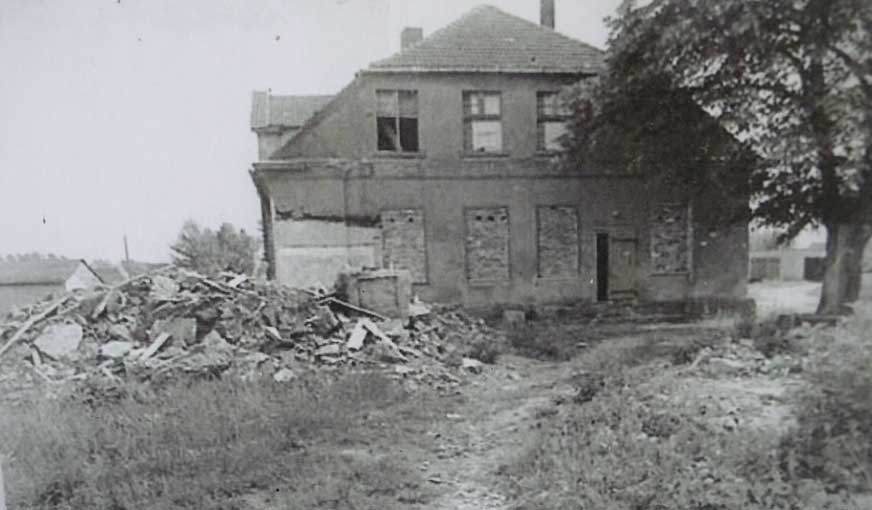
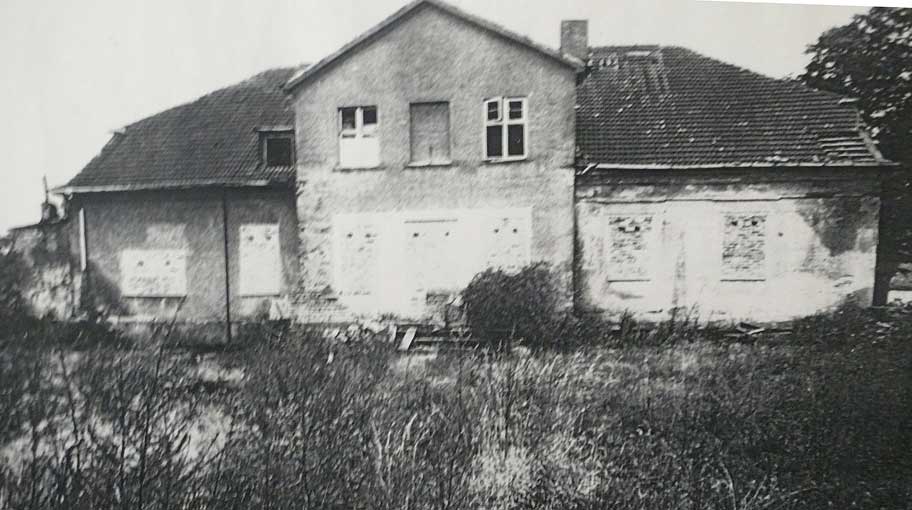
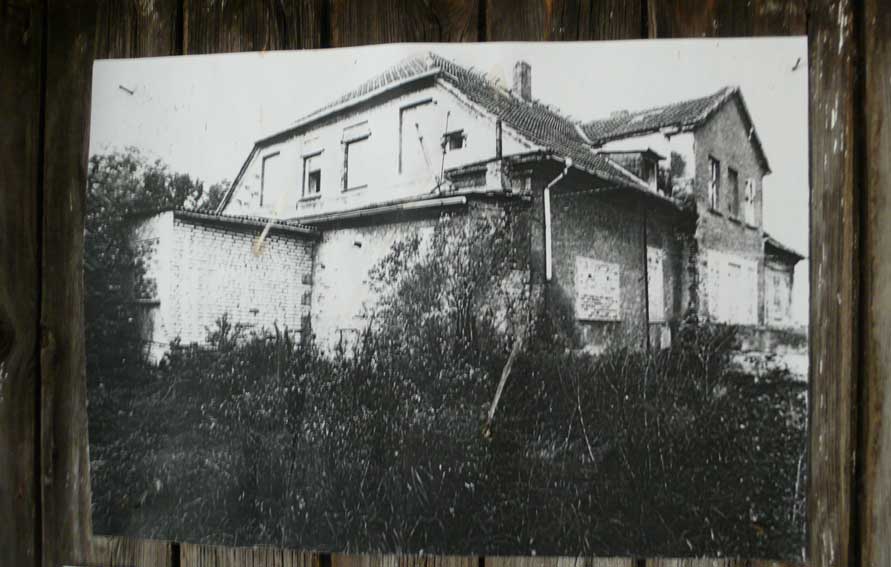
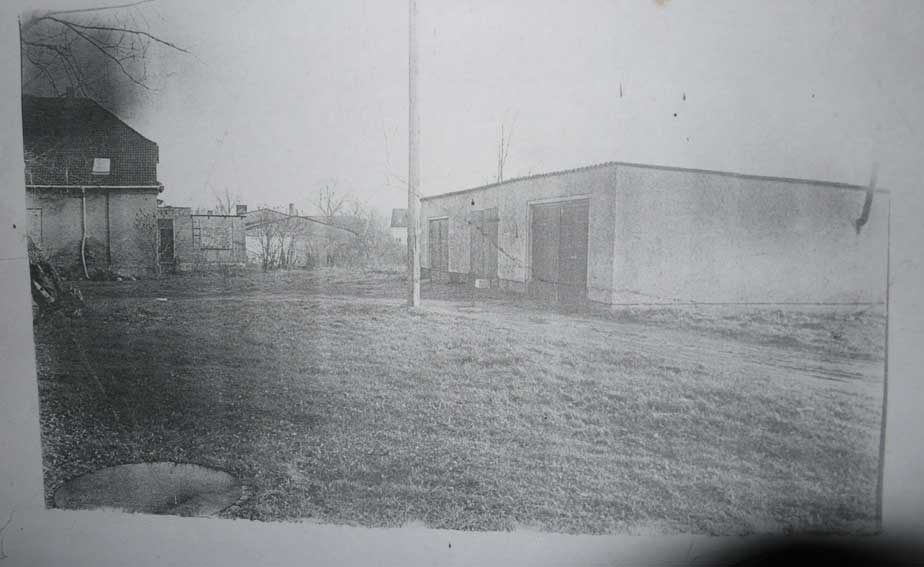
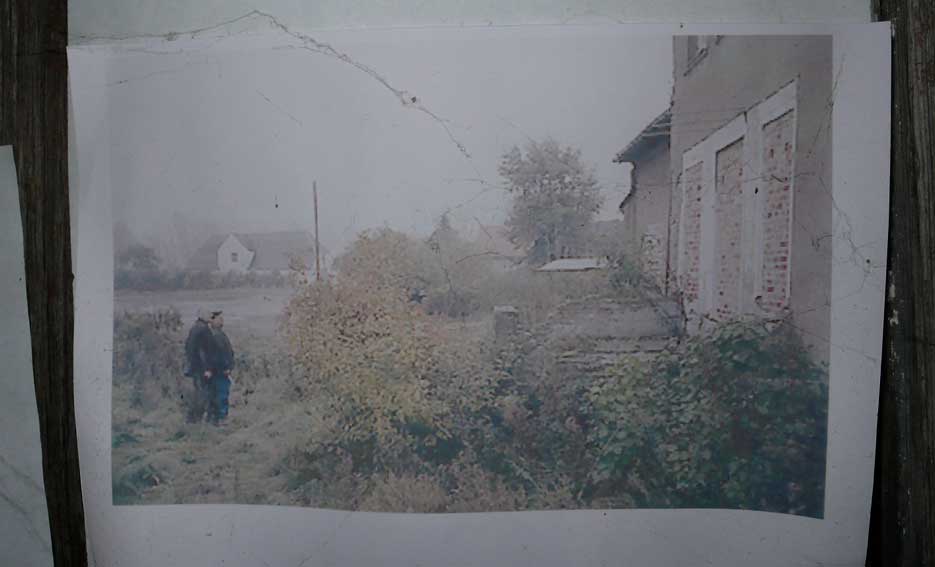
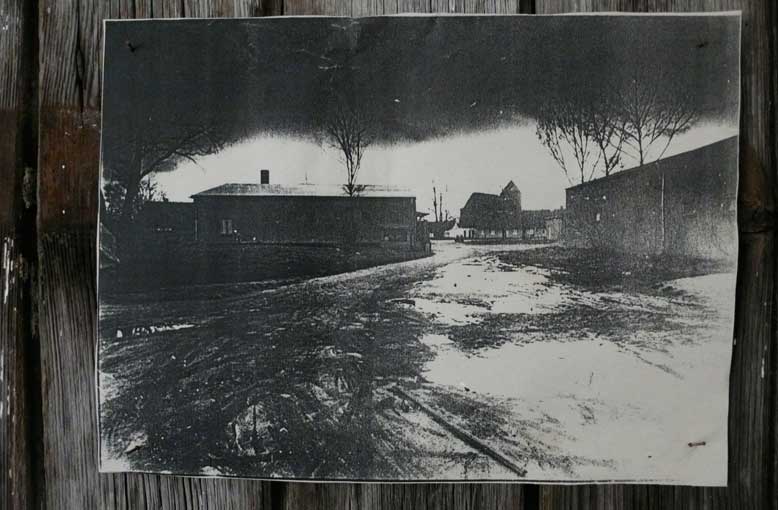
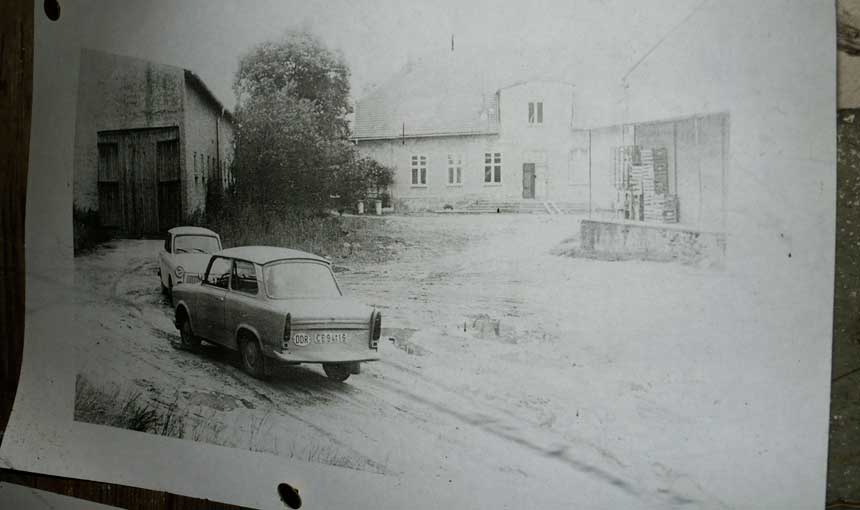
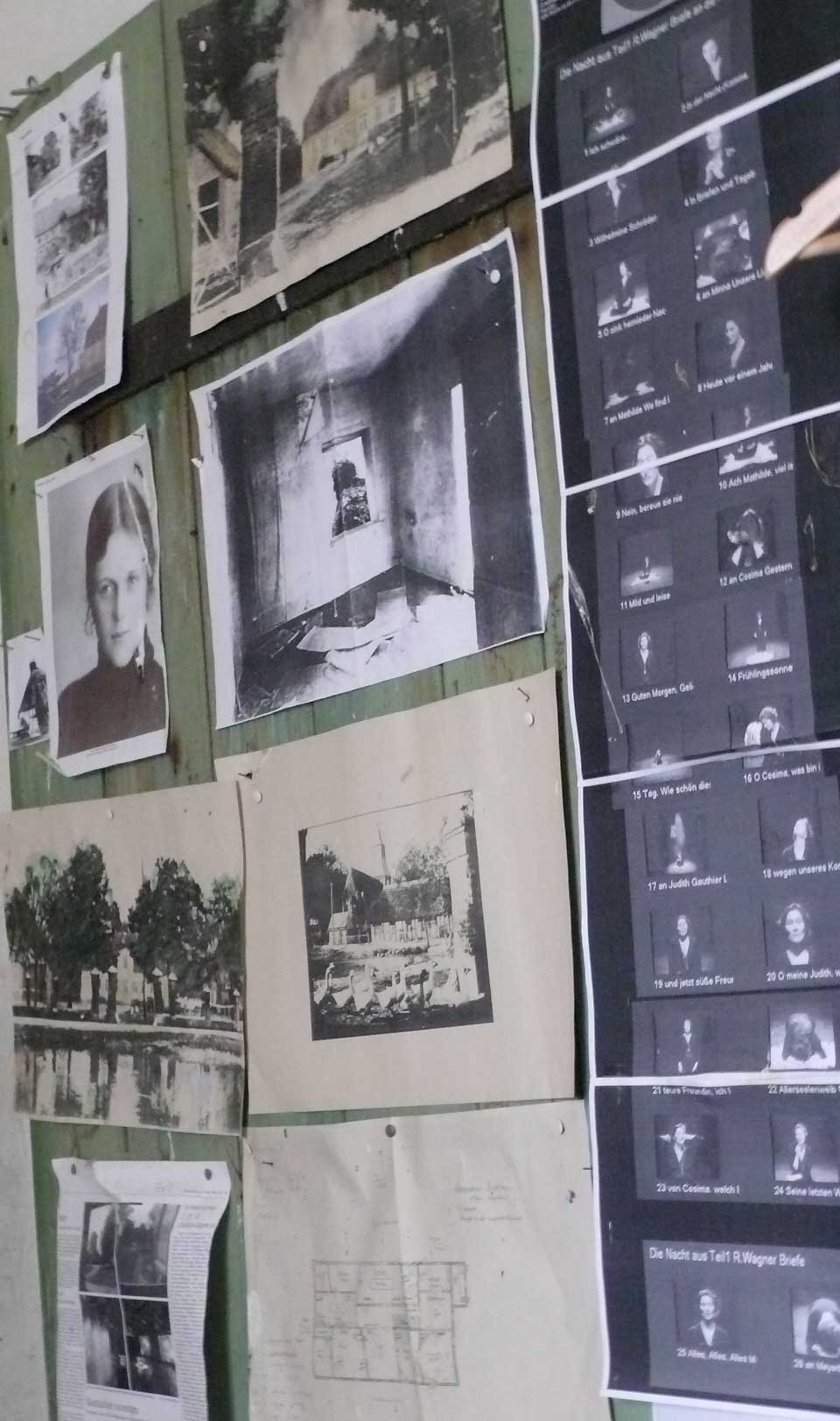
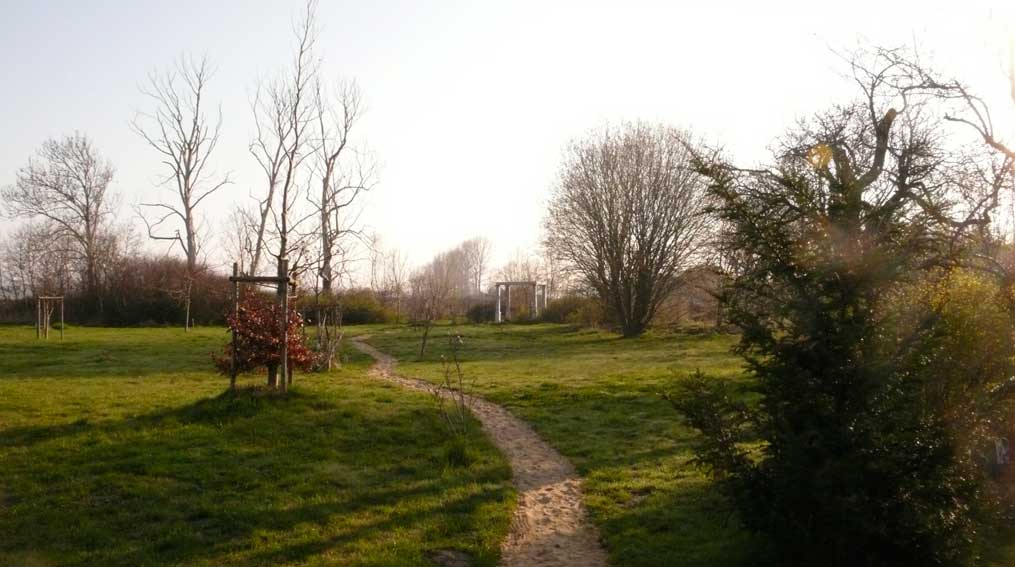
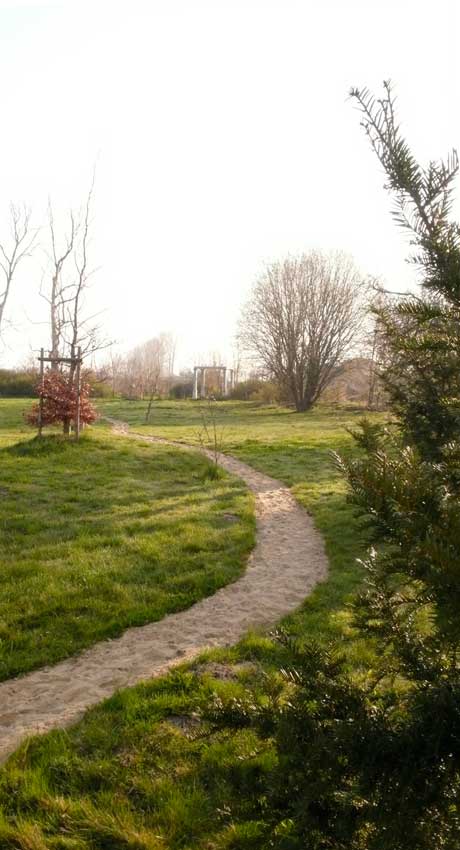
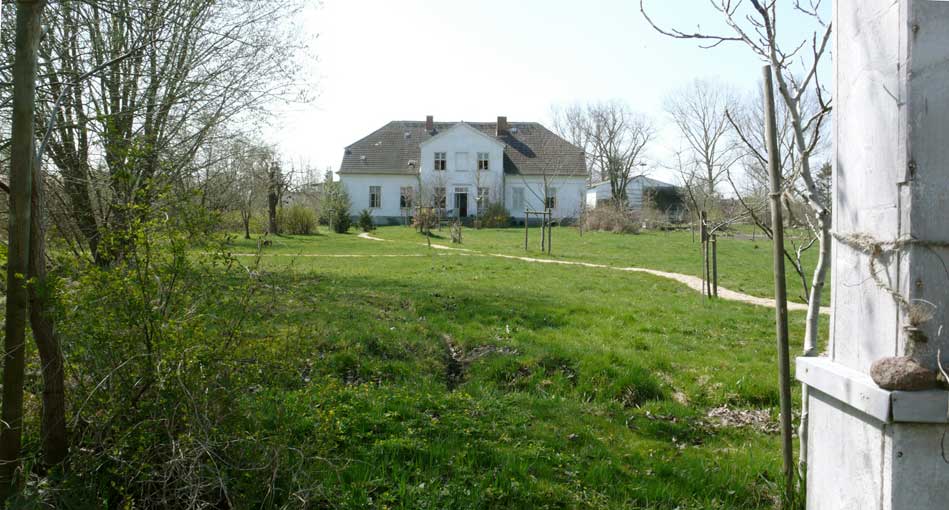
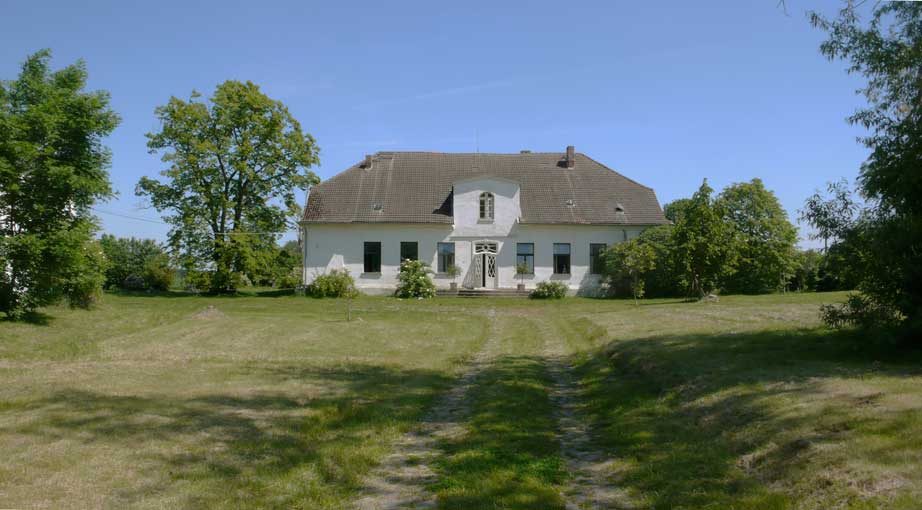
automatically transl
The Romantic and the cliché of the National
How important are cliches for the self of a nation?
29th September 2009
Hans-Jürgen Syberberg - film director and artist
wanted in the summer when I attended here in Berlin, in a conversation on stage at the Theatre Festival, I met after Mr Kittel man and he asked me if I participate in a series of lectures on "National Gallery" in the National Gallery. Given the place and its new presentation of the National Gallery, to which he invited me and he came to my warning that I then wanted to talk about it as just, lively agreed, I said then, after some hesitation, because I want to talk about the place where I am currently staying and not without a certain reason, and deeper meaning. The word "National Gallery, I found interesting in this context because the place I was born in Pomerania, Nossen village in West Pomerania, all sorts of poses in what I believe is suitable to apply in this context, particular attention, namely in the context of National and Gallery, Gallery in the sense of entitlement that is an artifact. There is so much that I came back to this place 20 years ago in the fall after the Wall came down and I saw the house again, the farmhouse where I grew up and where I was twelve years then went away. I say deliberately not had to go where we left with my parents, and that this house was in a state that in comparison to what I wore as a picture of my childhood in me is to not even describe. Nightmare is not the word. It has not imagined, because of course was considered in 1945 much of what would be good and it was also certainly considered evil, the death of the father as a landowner, perhaps even fighting, in which we had come well over, but also just as by chance, that is, we were thinking of possibly ruinous conditions. No comparison to what I encountered there. I actually saw the house again. There are other reports of people who knew the pictures from my books, from this house before 1945, and who have sought it, when they got there, but it is not found after the turn. I only found because I already got pictures of a friend who had gone there from the West, sometimes secretly, and therefore knew about how it looks. At least in the context as it was now gray, with DDR-plaster, without the accompanying stables left and right, the cows and horses and pigs, and this was so is part of a courtyard, with a transverse preceding consumption, with an emptiness all around severed trees, waste-land, (when a writer tries to imagine such a thing). I initially did nothing, except that I then to the wall just after the newly installed mayor went and asked them to notify me if anything should move. But the house was inhabited, eight parties were living in it, in deplorable condition, so that to me after my tour of the house said there had an excavator ago. It hurt a lot. When I came back then, ten years later, when the house was bricked up, people were out and the remaining stalls were now gone, too, as all remaining trees that were still standing behind the house or garden. The house was literally on the demolition, already submitted by the former owners. That was 2000th I had to decide, yes or no. This was very
Page 2
difficult, because I knew what would happen now if I would choose to come. So I went and fought for the reacquisition of the house with a courtyard and park, and always without the pair-fields, which lasted about three years. So I have many owners, who now had parts of both the ground and the house, purchased the house and its environment in the former state. And trust always there. The House was set to zero, but the reason but at least paid for, again, as always looked all that well. And then it started, which was in 2003. In 2003 I received an invitation from Paris to do a retrospective of my films. I said, only because I had the idea of this place, Nossendorf he means yes, connect with these films in Paris, Centre Pompidou. That was also my proposal for an installation in several rooms, which was also implemented so that we at the Centre Pompidou several rooms with the movies of my life showed the same time always on different topics, but I do not want to carry on. But in this case connected with live images from Nossendorf, as it was then, with four cameras. And vice versa with two live cameras, pictures of Paris from the Pompidou Centre after Nossendorf, sent in this godforsaken place. The 2003 was for me a start, in the still-walled house to appear again, as an invitation both to the residents there in Pomerania, as well as visitors in Paris, in this place to take part, alternately, as part of my life, which the film was used. When it was over, then began the practical rehabilitation. I had originally not planning to live in this house again, but I really wanted to bring the public in any way, walled up as a monument of the time, because money was not there so, I only had the money from the work on my films and in Theater, non-profit, so they inherited nothing and no other contributions. So I thought about how I can do it with minimal means, as I had made my films ever, not known to the public market and had therefore not dropped much. They had not much more available in grant funds for the production. So, in a modest way, we made the inside of the village with some people who had learned there walls or knew anything of doors and windows, iron and wood, and electricity. This was necessary for me only once the people who lived on the farm in garages, won. That these were the people who were against me, for my coming back to them meant the loss of these garages and therefore their place. And it was clear in the long run because they could not stay then. This also meant the removal of the consumer as the center of the LPG village in the middle of the yard. Well, the consumer was now long closed, but it demolished would have cost only 28,000 DM, and which I had not, so we had the resolve internally and with the help of this garage dwellers, which we in our language "Assis", called anti-social elements would and they behaved well, just as we imagine it. I had once made a film about rocker in Munich and so in the way this garage inhabitants were now there. So I made it my friends, I can say, as the director of a new movie on its own and the real thing now, and so we share of the house and then restored once inside, as was the totally changed. There were new walls, but for the new conditions of every eight parties, who lived in it and there were ancient walls or doors removed and windows walled up like the doors. So we had to do all sorts of very roughly, around the house to restore. I did not know how or why, but they wanted to do something, they were now one part of me motivated and on the other they were given money because they were unemployed. But money in a way, how could I allow me from room to room, knock out windows, doors, restoring the old, the wrong
Page 3
Openings close, remove the false walls, the old set up again, following the layout of my father or my memories. Well, my memories were those of a manor house and a yard, as it is now no longer exist, not even in the West, with pigs, horses, cows, chickens, geese, corn and beets and the people with the first and extensors Threshing managed. This world was ended in 1945, in the West. We know that agriculture is different today. The GDR has responded in its own way, we know that the settlers took over that, then the collective farms, thus the large summary in large companies and the inefficiency of the old economies, so had to leave the old thatched barns and stables of handmade bricks had away or fell into disrepair. The manor house was not occupied by any new powers, but it was destroyed as emergency quarters by other uses, that was a national objective. But restoring the memory of the previous state, as I also represented in an important chapter at the end of my movie with the title "The Night", shot in 1984 as a monologue, for six hours with Edith Clever, this memory was not possible then. By the way, I made later on a 2nd Film about the city Nossendorf, was supplemented in the memory of the "night" and I "A dream, what else?" named after Kleist's Prinz von Homburg. " and I must go back again, but this makes sense, why do I do that, this film is based on the Wall ..., no different, it was first a play in 1990 and was then shot as a film in 1994, so was not my recollection, for I had now been in Nossen village and had seen what it looks like there and what was lost, but became the swan song of loss. I had the feeling that all is lost. manifest with the premise that past memories, become in a movie theater and also on the way to Paris and a film, the loss was dedicated, with this premise, I had to start again. This did not recover beyond the inhabitable. All considerations make possible a new movie and with this new film possibly through a historical reconstruction of the building to me to fund a full restoration of the court, all these considerations, in the sense perhaps of Bergmann's childhood memories as a movie, like "Fanny and Alexander" , were rejected by me, after long deliberations. It could have a family history of a particular kind. There are occasions in the family enough to do that. This idea was rejected for many reasons, including, among other things, because now I had to start from a completely different situation and accept it. This situation of Tabula Rasa and I had to accept that it was a result of the war and ultimately a consequence of what was then East Germany, and what was done these houses and their culture. The removal of the owner and in this context, a strong strain or a very strong challenge to the churches that belong in my understanding to this concept of rural culture. The whole thing goes back to a curse by Morgenthau. Morgenthau had not only the dismantling of industry in mind during the last years of the war, but he had a plan to divide Germany, as happened then. And the eastern part beyond the Oder-Neisse border and cut off each other, so the Poles and Russians handed. How then realized. The dismantling of the industry, as planned, has not taken place because were interested by the East-West confrontation of both parties to make the very different industries new interests subservient. And Morgenthau spoke out against the curse - and this is important in this context - against the then ruling structure in East Germany, also in the remaining part, on this side of the Oder-Neisse border. And that is then taken effect, but not with
Page 4
American, but with the help of others, first the Russians. The goal was this culture, as described above, which I experienced. And the coal is then confirmed when the Berlin Wall. We must now therefore accept this loss, accept as final. It has no sense complaining, it makes no sense to be whining, it makes no sense to restore it back completely. In parts, yes. I have, as I said, according to ancient knowledge and sense of digging for ancient ruins, I have tried to preserve what is still there, floors and ceilings back to expose and remove the wrong thing. But this is not the essential work, it is only a prerequisite for something to do with it. So it goes. What makes this situation? What I do is not a film, not theater, not a book. I do my daily pages in the Internet by I report, since I'm here, what I do or what goes through my head. It is not a chronology of what I do, in the sense of a diary, but it is one, as I understand it, artifact of the actual meaning or spirit behind it, it all came from, well after the loss and emptiness. Therefore, the acceptance of the invitation at that time to speak: in a National Gallery. I mean, it's something that belongs in the context of the things that were formerly called art, although it can not be hung on the wall, although it can not go to the movies. But I create spaces so that I send to the Internet, with thousands of visitors, in conjunction with my films, which can be seen there too. And this is what I'm doing is obviously not a model. What's done is modeling here as a historical fact, but what I'm doing is, of course, no model for anyone else, because I have a special way to deal with things. I see all around in the area people take these houses back. This is a very interesting case and it will be important if possible, what is happening right now. I do not mean the commercialization of golf courses and by hotelmäßige use or museum, but by different people try different ways to stimulate such firms to make publicly. This is really an interesting case when one compares how different and individual happens. That is what I mean by culture. These assets were formerly castles or even cultural institutions, especially in connection with the churches. I make my way to recovery now and then, of course, is a special. It is a struggle, as others have to fight him, daily. I must fight for the trees at the border, because trees are not there, loves, one must go to court, must pass through the instances and if you're lucky, you have saved at the end of the trees and you can stand to leave it, otherwise have them away because they make leaves and they make roots, they make shadows, etc. Or are such Fighting for an old road to the church because I am of the opinion that this way was not only a way of the child to school and through the cemetery to the church and to the graves themselves, but it is also a way for all. But, says the court, there is no popular action, so I can not fight for others, but only for myself, and I myself would go round the outside, the concrete exterior of the LPG - these were after all the departments within the district administrator and the local mayor lost, including the interest of the church. And if I want to initiate in the Church something that will connect concerts and exhibitions with receptions at home with me, then so that the visitor does not have to go over concrete roads, with detours, but that it the old historical, recorded in 200 years means, arise in their place now are barbecue areas and widen access roads to drive. This is so everyday. So a fight with majorities without history, or only with the history of the DDR community experience, quite comparable with other places, where there are also those wars. But that's not what matters. The bottom line is that this is what I call artifact, is the form that I
Page 5
both can show live cameras and films in my room, not only in Paris and then at the beginning but now also in other places, such as the Kunsthalle in Vienna and at the State Museum in Schwerin. In other words, we try to make each one different topic projections, both live from the place or compare now-historischgeworden old and new, and in conjunction with my films because the films are ultimately a bit so as to . do That was really the difficulty of my decision to go there, I knew exactly the moment when I go out there, I'll have to assign my oeuvre this place, this place is practically the stamp will be for it. And these films have to withstand it. So movies about what I know, Kortner or Brecht or a Hitler-Film. You can imagine, of course, has to do with Hitler. And Kortner indirectly, Schiller, Kabale und Liebe "and Brecht" Puntilla ". So you see, there are compounds that are not only artificial, but stimulate that place mentally, although there does not understand this and will not, incognito. Compounds mitbesetzen other hand, the films, because the source is already in this way, a very special, because it is a home from the land. But who goes back to its origin, must in my opinion, come forth from his end, that is only from the end, it is allowed to go back to that origin. It is an old story of our emigrants, the great, we know from 1933 that have made such statements also partly entirely ashamed. But we can also think, why are they actually come back, I think the more interesting case, and the more interesting theme in the lives of people with names that we hear almost daily quote, and read their works we read and the theories known to us are, to one side. (??????) If they have come back, is actually the interesting thing, why are they back? Furthermore, they have spoken, quiet and not great books written about it, but that's a phenomenon. And since I am immediately again used when I was that once at war with them because they are used incorrectly or appear cheap partisan. Well, yes. You could talk about many things in detail yet, then perhaps this can be in the discussion. One is perhaps interesting in this story: when you look at my web sites daily, then very often you see pictures of Nossendorf that I record and be surrounded by any text, images about the past, but most of today's state. Is measured by what I saw ten years ago or twenty years ago there, like a miracle.
And you see there, just as Mr. Kittel man called me the other day, and I again asked eagerly, for my responsibility in view of the now concerns the theme "How German ..." and the importance of the cliché, is in the self of a nation to come yet and even when I wanted to say to the title picture with nothing and I Waldeinsamkeit - if any - could occur only to report what I was doing, because I think this was important because it is profound. But just as I had a picture on my computer, my daily picture, and before I saw trees, large front, nor from the past and a few little in the background of today, newly planted, and in between a light as in the pictures with the title "and God is through the forest," I know from the old books my parents used to before 45, the "Forest of Solitude" similar to how she was now set for the talk. The internet address of that term "and God is through the forest". And with the light. The very thing I wanted to talk about what does not, as here too remote. This is now a daily picture of what I was doing and looked? But when was talking about how, without the background of what was reported previously. The images I see every day of Nossendorf today show a perfect world, without the fragility of their
Page 6
My story might not be possible. But if you do not know that, you think that is an idyll. And when I asked one anti-art of today, here, as I establishing itself daily images, as if they were the beautiful, the cure, pictures of this miracle, without knowing from what I said earlier, from the rediscovery of a re-awakening itself I think went through the schools of this time, pondering what I'm doing and what that means, as a deliberate act. I am not ashamed to say. how hard it was to push through these trees and paths against the gradually towards me swept garage owners or people of the village and the church, by poisoning the trees part, or to destroy try with saws and axes, or other shelter for just this world again to bring down on them once liked and own. So it is not anti-art, but something quite unique in the world where the waste is now produced artificially and trash so often on stage, is produced with much effort, with lots of money and violence. If I then consider how difficult it is ahead from these trees and create some situations, as I a rice of an apple tree from a neighbor back hole, which has bred once with scions from our garden, apple trees and pushed through to new trees. And I get again the buds to our old apple trees recover. When you consider all this, then you see these apples and the flowers and the meadows and the ways which all had to be restored again, with different eyes, because wish they had disappeared in the park and garden of the house and all the estate and it is then, yes, as you call it, is it the opposite of what you normally see today. But still something is created today and that really grew out of the difficulties of this garbage of history, ten years ago, twenty years ago, I have been asked as a task. This time not as a film or play or book, and man, but as a place of life in the world.
And there, all in one pass together. What literally see beneath the surface smolder, it must be here yet remained fundamental motives. These problems are hopeful way.
Eine bessere Übersetzung vorschlagen
©2010 Google - Sofortige Übersetzung deaktivieren - Datenschutzbestimmungen - Hilfe
